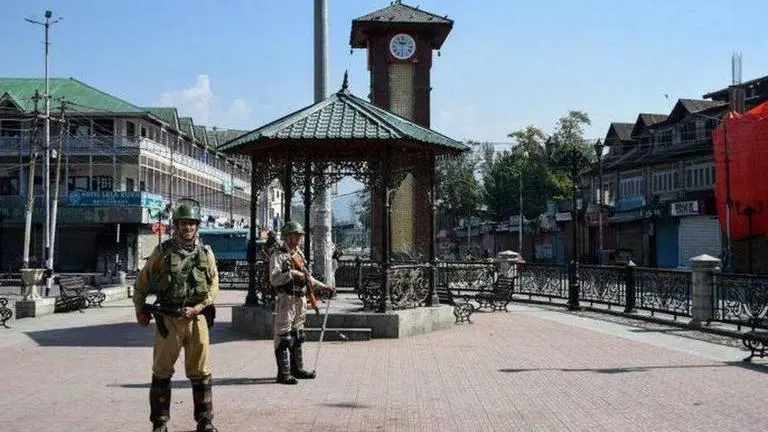Updated 29 July 2020 at 19:22 IST
Almost a year to abrogation of Art 370, a lookback at Jammu & Kashmir's security scenario
The decision to repeal Article 370 and 35A has been popular and is considered significant as it has helped to get the security situation better in J&K
- Opinion News
- 4 min read

Its almost been a year since the Central government’s August 5 decision to strip Jammu and Kashmir of its special status through the abrogation of Article 370 and 35 A and carve out two Union Territories — Jammu and Kashmir and Ladakh. With the Centre's decision, Lieutenant Governor has replaced the Governor and has given birth to two administrations rather two lieutenant governors (2 administrators after bifurcating erstwhile state of Jammu and Kashmir, one in Jammu and Kashmir and another for Ladakh).
The decision to repeal Article 370 and 35A has been popular in many other parts of the country and is considered significant as it has helped to get the situation better as far as security scenario in the Valley is considered. However, not much change was witnessed as far as number of youngsters joining the terror ranks (post abrogation of Art 370) in Kashmir valley is concerned.
Crackdown on terrorism
As per insiders within Jammu and Kashmir Police, in 2018, some 135 youngsters had joined terror ranks, while in 2019, 124-youth joined the different terror outfits, however in the current year, 90 youngsters have joined terrorist organization in the Valley. However, Police officials believe, that out of these 90 terrorists, some 38 were killed during anti-terror operations in the Valley, 22 were arrested and only 30 are still active that too will be neutralized soon in case they don’t surrender.
Another success for the security grid this year was that the majority of the dreaded terrorists who were active for a long time in the Valley got killed during the anti-terror operations. This year so far, 138 terrorists have been killed in the hinterland of the Kashmir Valley. JKP along with the other security agencies neutralised some of the top-ranking terrorists including Hizbul Mujahideen’s Riyaz Naiko, Lashkar-e-Taiba’s Haider, Qari Yasir from Jaish and Burhan Koka from AGH.
Advertisement
Security forces also eliminated Pakistani terrorist Fauji Bhai, who was an expert in building IEDs and Junaid Sehrai, who was a son of a senior Hurriyat leader Ashraf Sehrai and was instrumental in recruiting youth to terrorism ranks, this year.
Earlier, a large number of crowd at the funerals of terrorists would automatically become sort of recruitment rallies for the terrorists, bringing them fresh recruits and supporters, but now have become a thing of the past. Now, there are no big funerals. Slain terrorists are not even buried in their native districts. In a low-key manner, slain terrorists are laid to rest in some other district in the presence of a few of their immediate relatives and a magistrate and after following medico-legal formalities like taking their DNA samples.
Advertisement
Another way of getting youngsters attracted to terror ranks was the phone calls made by a trapped terrorist during anti-terror operations to his family or friends. In past such, call recording would normally find its way to general masses and would act as a catalyst on some of the youngsters to pick up the gun but post-Aug 5, handful of voice calls (recordings) got in circulation.
Not only one but multiple reasons are also responsible for that — one is post abrogation of Article 370, the Centre suspended telecommunication for almost 3 months, although facilities like landline or later postpaid mobile services were restored, mobile internet services remained disconnected.
On 24 January, the home department of the Union Territory of Jammu and Kashmir issued a notification saying that access to the internet with 2G speed on mobile phones will resume from the next day. Access was given to limited whitelisted sites, however, social media platforms remained out of bounds for the Valleyites and then low speed (2G) made it difficult to upload and circulated (videos/call recording of terrorists) quickly among masses.
There has been a sharp decrease in incidents of stone pelting. This area too saw a drastic change in this one year — both during anti-terror operations between security forces and terrorists as well as on other occasions. There have been no major violent protests in the Valley, with the result that use of teargas shells, pellet injuries were reduced and the number of deaths in law and order went down to negligible limits as the clashes during anti-terror ops too declined.
Although a year may be too early to assess the impact of the August 5 decisions, the signs of the decision are quite encouraging.
Disclaimer: The views and opinions expressed are the personal opinions of the author. The facts, analysis, assumptions, and perspective appearing do not reflect the views of Republic TV/ Republic World/ ARG Outlier Media Pvt. Ltd.
(PTI Photo)
Published By : Zeenat Zeeshan Fazil
Published On: 29 July 2020 at 19:22 IST
